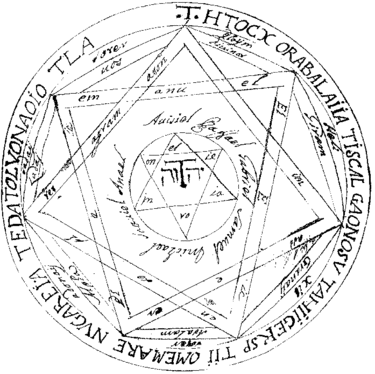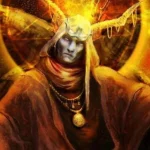„Cheile lui Solomon” este un termen colectiv folosit pentru a se referi la mai multe grimoires (cărți de magie) atribuite regelui Solomon, figura biblică renumită pentru înțelepciunea sa.
Aceste texte fac parte din tradiția ezoterică occidentală și se crede că conțin instrucțiuni magice și ritualice. Cele mai faimoase două texte din categoria „Cheile lui Solomon” sunt „Cheia Mare a lui Solomon” și „Cheia Mică a lui Solomon”.
„Cheia lui Solomon” a jucat un rol semnificativ în istoria ezoterismului și ocultismului occidental.
A fost studiat, adaptat și practicat de nenumărați magicieni, ocultiști și savanți de-a lungul secolelor.
Influența sa poate fi văzută în diferite tradiții magice, inclusiv magia ceremonială, demonologia și magia angelică.
Eficacitatea ritualurilor și vrăjilor descrise în „Cheia lui Solomon” este o chestiune de credință și interpretare.
În timp ce unii practicanți abordează aceste ritualuri ca pe o formă de explorare spirituală și psihologică, alții le văd ca mijloace de invocare a entităților supranaturale reale.
Cheia Mare a lui Solomon
Acesta este unul dintre cele mai cunoscute grimoare din ocultismul occidental.
Această secțiune a „Cheia lui Solomon” se concentrează în primul rând pe ritualuri pentru evocarea și comandarea spiritelor, atât bune cât și rele.
Conține instrucțiuni pentru crearea instrumentelor magice, cum ar fi Cercul și Triunghiul Artei, precum și diferite pentacule și sigiluri asociate cu îngeri, spirite și corpuri cerești.
Este adesea denumită „Cheia Mare” pentru a o deosebi de „Cheia Mică”.
„Cheia Mare” este atribuită în mod tradițional regelui Solomon și se crede că conține instrucțiuni pentru chemarea și controlul diferitelor spirite, precum și informații despre unelte magice, sigiluri și pentacule.
Este împărțit în două cărți:
Cartea întâi: Ars Goetia
Această secțiune descrie conjurarea și controlul a 72 de demoni sau spirite. Fiecare demon este asociat cu un sigiliu specific și o descriere a abilităților sale.
Practicantul poate evoca aceste spirite în diverse scopuri, inclusiv obținerea de cunoștințe, dobândirea bogăției sau căutarea puterii.
Cartea a doua: Ars Theurgia
Această carte se concentrează pe mai multă magie angelică și divină.
Include invocații, rugăciuni și ritualuri pentru contactarea ființelor angelice și valorificarea asistenței acestora pentru înțelepciunea divină și iluminarea spirituală.
Cheia mai mică a lui Solomon
Cunoscut și sub denumirea de „Lemegeton”, acest text este împărțit în cinci cărți sau secțiuni, fiecare având propriul accent:
Ars Goetia
Similar cu „Ars Goetia” din „Cheia Mare”, această secțiune oferă instrucțiuni pentru invocarea și controlul demonilor.
Ars Theurgia Goetia
Această carte continuă tema invocării spiritelor, dar pune un accent mai mare pe tărâmurile cerești și angelice.
Ars Paulina
Această secțiune tratează cei 72 de îngeri ai zodiacului, conectându-i la diferite grade ale semnelor zodiacului.
Ars Almadel
Axată pe magia angelică, această secțiune oferă instrucțiuni pentru a contacta îngerii prin utilizarea unui altar cunoscut sub numele de Almadel.
Ars Notoria
Cartea finală, „Ars Notoria”, conține o serie de rugăciuni și invocații menite să-și sporească abilitățile intelectuale și spirituale.
Aceste texte, în special „Cheia Mică”, au jucat un rol semnificativ în dezvoltarea ocultismului occidental, magiei ceremoniale și demonologiei.
Ele au fost studiate, adaptate și utilizate de diverși magicieni, ocultiști și practicanți ezoterici de-a lungul istoriei.
Este important de remarcat faptul că eficacitatea ritualurilor descrise în aceste texte este o chestiune de credință și interpretare, iar utilizarea lor variază foarte mult de la practicant.




